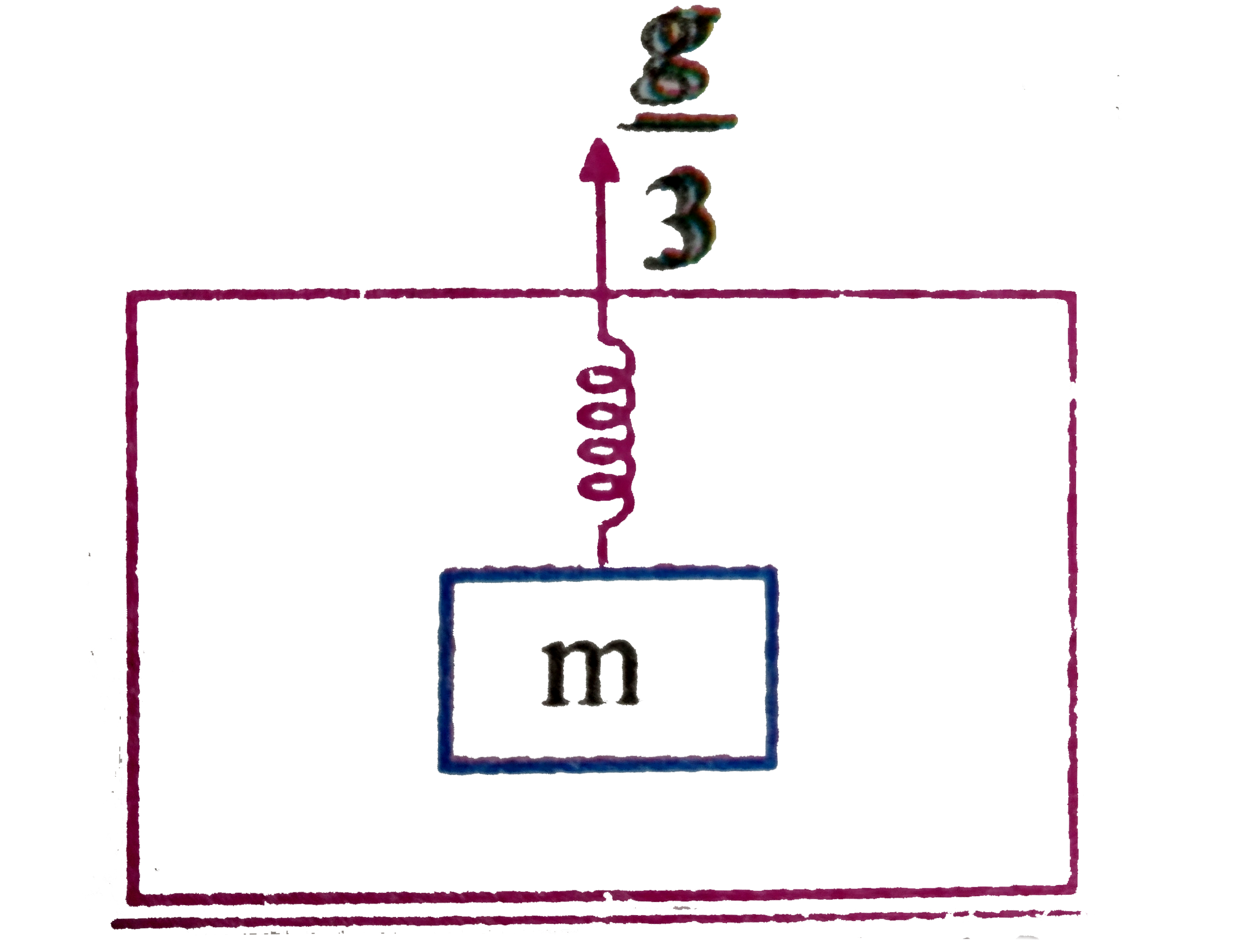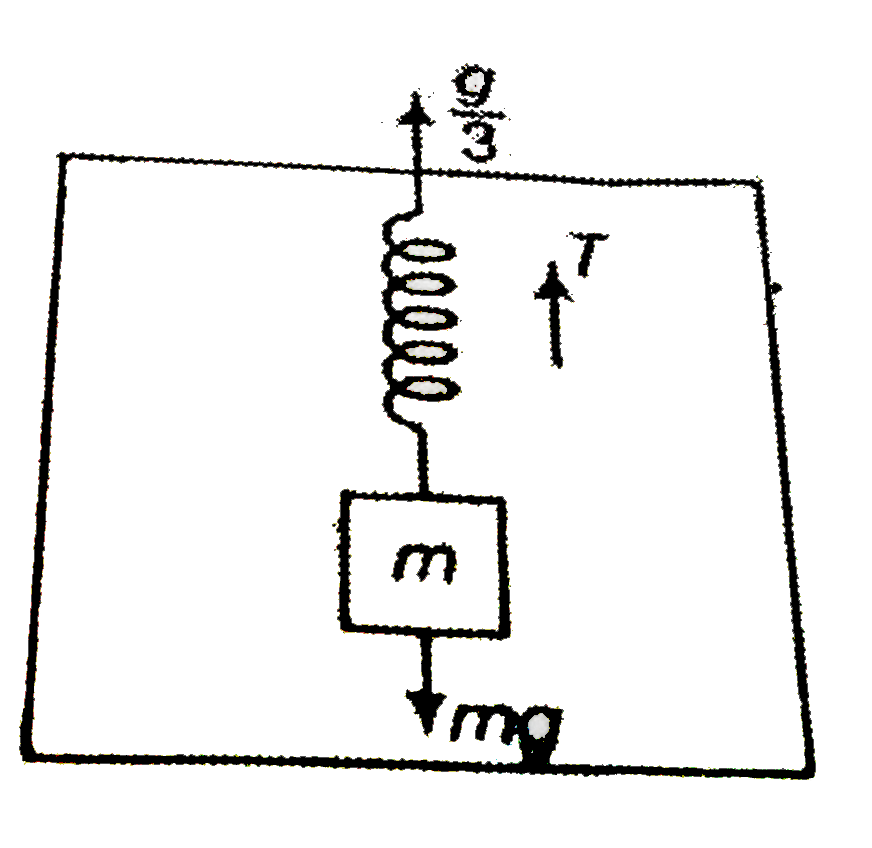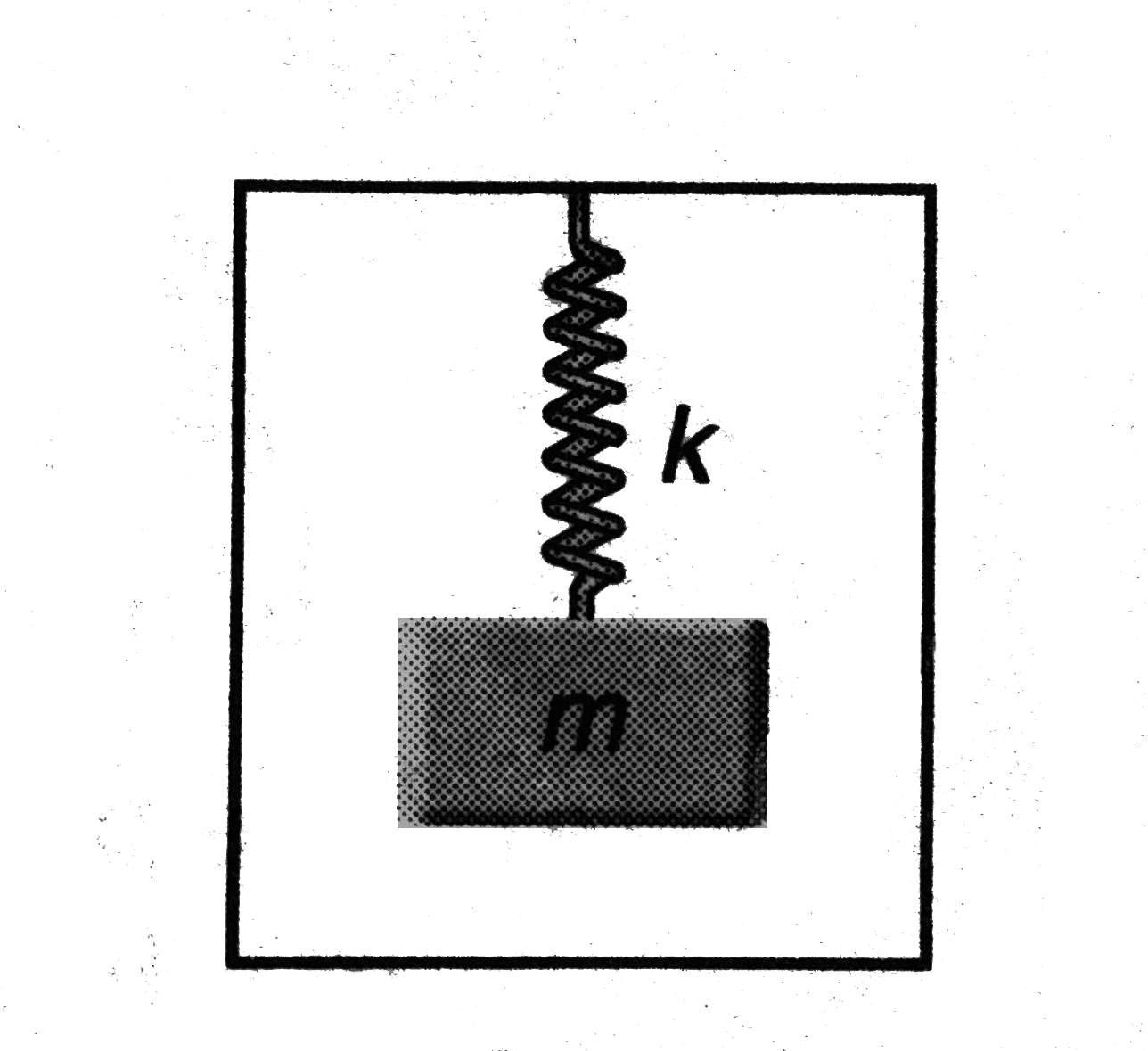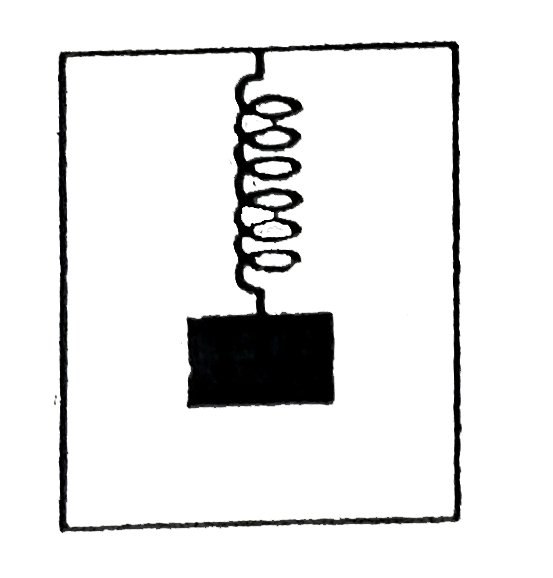A spring of spring constant 200N/m has a block of mass 1kg hanging at its one end and other end of spring is attached to ceiling of an elevator. The elevator is rising upwards with an acceleration g/3. What should be the angular frequency and elongation during the time when the elevator is accelerating?

14.14rad/s, 0.07m
14 rad/s, 0.1m
14.14 rad/s, 0.05 m
10 rad/s, 0.07m
The correct Answer is:A
The angular frequency under all circumstance is
ω=√(km)=√(2001)=14.14rad/s
When elevator is moving up, the equation of motion is
T−mg=mg3⇒T=4mg3
This tension elongates the spring by x
T=kx
⇒ x=4mg3k=0.07m

Topper's Solved these Questions
Similar Questions
A spring of spring constant 200N/m has a block of mass 1kg hanging at its one end and form the other and the spring is attached to a celling of an elevator. The elevator rises upwards with an acceleration of g/3.
When acceleration is suddenly ceased , then what should be the angular frequency and elongation during the time when the elevator is accelerating?
 View Solution
View SolutionA spring of force constant 200Nm−1 has a block of mass 10 kg hanging at its one end and the other end of the spring is attached to the celling of an elevator. The elevator is rising upwards with an acceleration of g4 and the block is in equilibrium with respect to the elevator . when the acceleration of the elevator suddenly ceases , the block starts oscillating . What is the amplitude (in m) of these oscillations ?
View Solution
Knowledge Check
- Question 1 - Select One
A block of mass 1kg hangs without vibrating at the end of a spring whose force constant is 200Nm and which is attached to the ceiling of an elevator. The elevator is rising with an upward acceleration of g3 when the acceleration suddenly ceases. The angular frequency of the block after the acceleration ceases is
A13radsB14radsC15radsDnone of these - Question 2 - Select One or More
A spring has natural length 40cm and spring constant 500N/m. A block of mass 1kg is attached at one end of the spring and other end of the spring is attached to a ceiling. The block is relesed from the position, where the spring has length 45cm.
Athe block will perform SHM of amplitude 5cmBthe block will have maximum velocity 30√5cm/sCthe block will have maximum acceleration 15m/s2Dthe minimum elastic potential energy of the spring will be zero - Question 3 - Select One or More
A body hangs from a spring balance supported from the roof of an elevator.
(a) If the elevator has an upward acceleration of 2.45ms−2 and the balance reads 50N, what is the true weight of the body?
(b) Under what circumstances will the balance read 30N?
(c) What will be the balance reading if the elevator, cable breaks?ATrue weight of the body is 40 NBTrue weight of the body is 60 NCReading of balance if the elevator cable brakes is zeroDReading of balance it the elevator cable brakes is equal to the true weight of body
A spring of force constant 200Nm−1 has a block of mass 10 kg hanging at its one end and the other end of the spring is attached to the celling of an elevator. The elevator is rising upwards with an acceleration of g4 and the block is in equilibrium with respect to the elevator . when the acceleration of the elevator suddenly ceases , the block starts oscillating . What is the amplitude (in m) of these oscillations ?
View SolutionA block of mass 1kg hangs without vibrations at the end of a spring with a force constant 1N/m attached to the ceilling of an elevator. The elevator is rising with an upward acceleration of g/4. The acceleration of the elevator suddenly ceases. What is the amplitude of the resulting oscillations?
View SolutionA block with a mass of 2kg hangs without vibrating at the end of a spring of spring constant 500N/m, which is attached to the ceiling of an elevator. The elevator is moving upwards with an acceleration g3. At time t=0, the acceleration suddenly ceases.
(a) What is the angular frequency of oscillation of the block after the acceleration ceases ?
(b) By what amount is the spring stretched during the time when the elevator is accelerating ?
(c )What is the amplitude of oscillation and initial phase angle observed by a rider in the elevator in the equation, x=Asin(ωt+ϕ) ? Take the upward direction to be positive. Take g=10.0m/s2.View SolutionA spring mass system is hanging from the celling of an elevator in equilibrium. The elevator suddenly starts accelerating upwards with acceleration a. Find

(a) the frequency and
(b) the amplitude of the resulting SHM.View SolutionA spring mass system is hanging from the ceiling of an elevator in equilibrium. The elevator suddenly starts accelerating upwards with acceleration a, consider all the options in the reference frame of elevator.
 View Solution
View Solution

